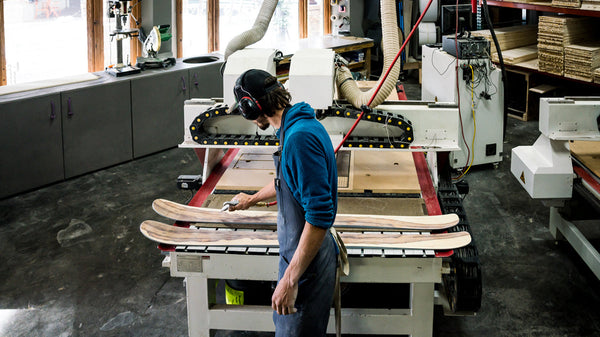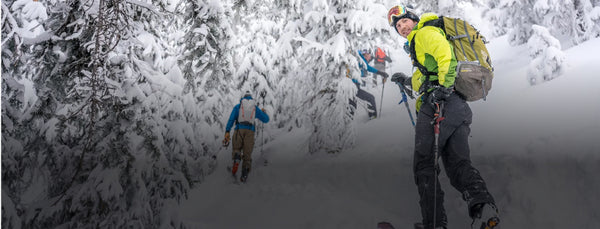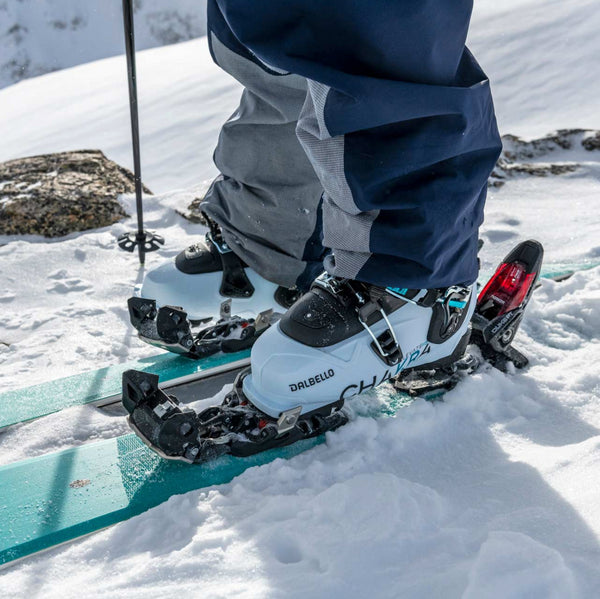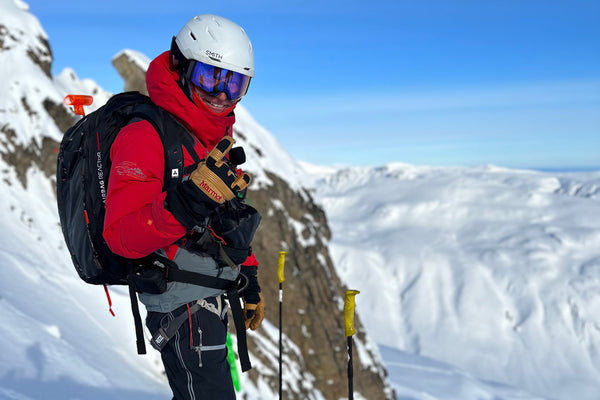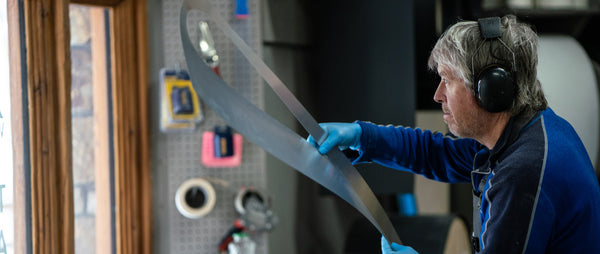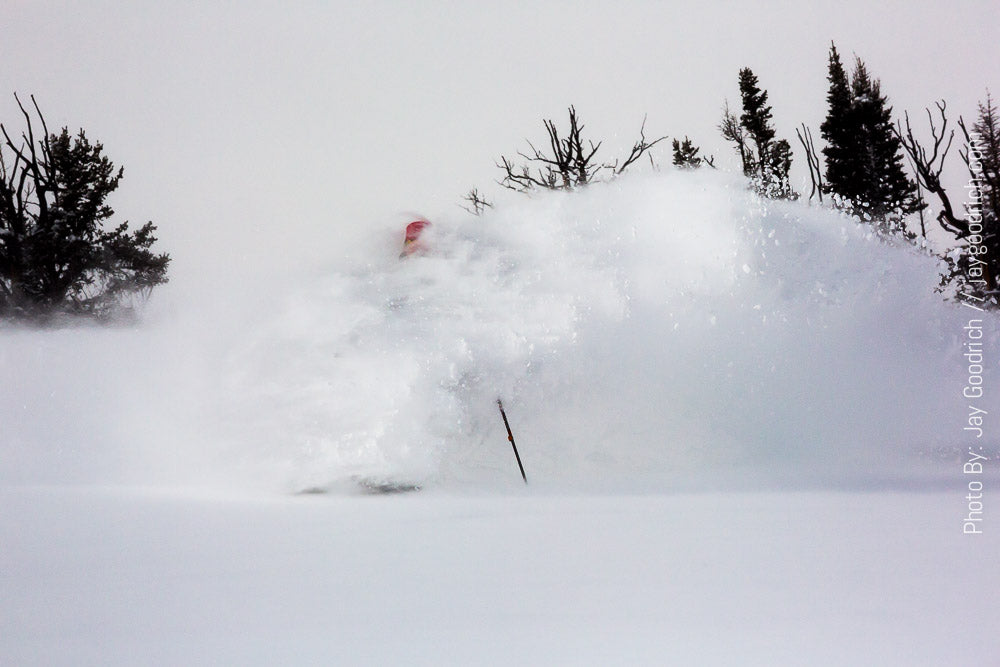
This is Your Brain on Powder
If you close your eyes on a chairlift during a powder day, you’ll hear what sounds like pure spiritual exaltation.
You’ll hear people so overcome, nearly rabid with joy, they can’t help but scream aloud. There is a frenzy to it, too, a hunger strong enough to make them ditch their partners, their children, their jobs to … do what, exactly? Float through fluff and try to avoid trees?
Have you ever wondered why skiing powder is so much fun?

Have you ever had one of these days?
This is something I think about every powder day—on the chairlift, of course, because I, too, am busy hooting and hollering while I’m floating downhill. This is also something I think about on flowy mountain bike rides as I accelerate around the banked corners on tacky dirt, and on the very rare waves I catch while surfing (I suck) as I hear the hiss of the board skimming over the glassy water. What is it about this feeling—smooth and swooping—that makes us so happy?
I mean, of course there are the endorphins we get from exercise, the serotonin we get from shared experience, and the adrenaline we get from speed, but there’s something else—something intangible—that those chemicals just don’t even begin to explain. Skiing, surfing, and mountain biking give us highs that make us want to revolve our entire lives around them.

Jay Goodrich finds himself in the white room.
When I started digging around for some science on this topic, I was surprised that there is a dearth of actual research. Maybe, I thought, “calling in sick” for a pow day isn’t really a thing for neurologists. But then I stumbled across one such science-y type who had a hypothesis. His name, er, nickname, is Slomo.
You can find him rollerblading on San Diego’s Pacific Beach Boardwalk, gliding along in an arabesque pose in slow motion (hence the nickname), milking gravity for momentum. Locals either think he’s homeless or a kook, but he’s actually a retired neurosurgeon and neuroscientist by the name of John Kitchin who just figured out that rollerblading was a hell of a lot more fun than looking at MRIs all day. He figured out that this kind of motion was his portal to “flow.” (Check out this award-winning documentary on him here.)

Slomo rollerblading on San Diego's Ocean Front Walk.
We’ve all heard of this term by now, but in case you need a refresher, flow is a concept defined in 1990 book by Dr. Mihaly Csikszentmihalyi (it’s easier to understand than his name is to pronounce). He essentially posited that humans are happiest when they experience periods of intense concentration or absorption, when self-consciousness and a sense of time disappear. This certainly describes what happens when we ski powder. But Kitchin decided to dig a little deeper.
Kitchin looked at the actual neuroscience that occurs with this sensation, and he found that the vestibular reflexes of the inner ear connect a person to the center of the Earth during moments of acceleration. The otolith, a piece of calcium on the membrane of the ear, rolls according to changes in the relative position of gravity. This gives your body the feeling that it’s moving relative to the center of the Earth, which, he posits, creates that mind-body bliss.
Skeptics may think it’s ridiculous to attribute this glorious feeling to a tiny bone in your ear. But consider this: The delicate vestibular system is what keeps you upright, oriented, and able to walk—not to mention ski. (I once tried to ski on a powder day when I was getting sick with the flu. My inner ear was so off, I found myself unable to figure out which way was up or down and wound up sideslipping down to the lodge.) If it’s the key to balance, it might just be the key to happiness, too.

Apparently Jay Goodrich finds himself in powder regularly.
There’s another interesting—and possibly related—phenomenon that physicists and elite athletes refer to as “superfluidity.” In physics, it’s defined as “a state of matter in which the matter behaves like a fluid with zero viscosity; where it appears to exhibit the ability to self-propel and travel in a way that defies the forces of gravity and surface tension.” Sounds like skiing pow to me.
Athletes feel this as a supremely conscious state, when everything around them vanishes and they feel connected in some way to an energy source outside of themselves or, some say, to the universe. They describe this state when they are performing at their absolute highest level.
We know this may sound a little woo-woo, but those who have experienced it all describe it in the same way. Perhaps this relationship of your inner ear to the center of gravity somehow bring the hemispheres of your brain into unison? Perhaps this is why we crave the feeling of swooping acceleration so much?
I’m no neuroscientist. But I do know I love to ski pow. I know it’s good for my body, mind, and soul. So until more research happens, I’m sticking to my own data—and will keep chasing it wherever it falls.
--
Article by Kimberly Beekman
Kimberly Beekman is the former editor-in-chief of the late, great Skiing Magazine (RIP), and a longtime editor of SKI Magazine before that. She currently uses the title of “freelancer” as a beard to ski powder all over the world. She lives in Steamboat, Colorado, with her wonderful daughter and terrible cat.

